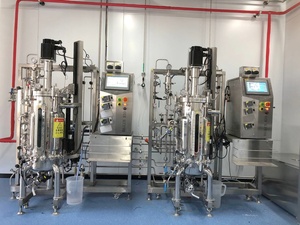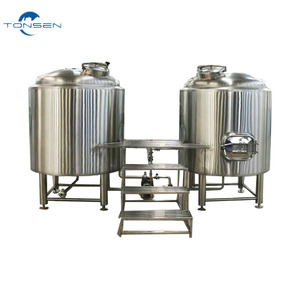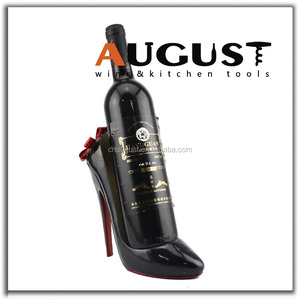(3125 products available)








































































































































































Canada red wine is diverse, offering numerous styles that appeal to a wide range of taste preferences. Here are the most popular types:
Renowned for its bold flavor, Cabernet Sauvignon often comes from British Columbia. It typically presents taste profiles of blackberry, cedar, and bell pepper. The grapes flourish in cooler regions of wine-growing areas, allowing a gradual ripening process that builds depth in flavor.
Agricultural experts recognize Pinot Noir as one of Canada's most prestigious red wine varieties. This grape is difficult to grow due to its finicky nature. It thrives in cooler climates like those found in the Okanagan Valley and Niagara Peninsula. Pinot Noir offers a range of flavors from cherry to earthiness, with a lighter, more delicate body than other reds.
Known for its soft tannins and fruity essence, this wine is ideal for newcomers to the red wine world. People often describe Merlot from Canada as a mix of plum, broad bean, and chocolate. The grapes come from various regions within the country, offering a range of profiles that go from juicy to more complex.
In Canada, the Syrah grape achieves a full-bodied flavor, commonly found in the warmer regions of the Okanagan Valley. Canadian Syrah/Shiraz tends to have bold flavors of dark fruits, pepper, and spices. The meticulous winemaking process helps maintain a balanced acidity.
This is the German name for Pinot Noir, particularly successful in Canada. The wine from Canada presents lighter flavors but retains the depth and complexity desired in a quality red. The cooler Canadian climate helps preserve the grape's natural acidity.
Gamay is notable for being fruity and easy to drink. It is increasingly popular in Canadian vineyards because it thrives in the cooler climate. This grape variety produces wines with vivid red fruit, banana, and floral notes.
Cabernet Franc offers a flavor profile that leans towards green pepper, raspberry, and spice. It is valued for its aromatics and elegance. Cabernet Franc from Canada has an extended growing season, which helps the grapes fully ripen and develop a more balanced taste.
Canada red wine experiences a wide range of uses and moments where people enjoy it. Spanning culinary applications, celebrations, and casual enjoyment, each usage enhances the wine's cultural and social significance.
Red Canada wine, especially fuller-bodied varieties, complements many meats like beef, venison, and lamb. Its tannins harmonize with proteinous foods, softening the meat's richness and enhancing the overall flavor. The wine's acidity cuts through fatty sauces, making it ideal for dishes like boeuf bourguignon and coq au vin.
Its fruity and spicy elements make this wine a perfect fit for sharply flavored cheese. Game meats like pâté or terrine are equally well paired with Canada red wine. Wine reductions also allow the use of red wine for sauces, infusing dishes with depth and flavor.
Red wine from Canada is a staple for toasting at weddings, anniversaries, and holidays. The wine's versatility in offering a range of styles and flavors allows it to suit diverse tastes and preferences. Whether served in a glass or used to make sangria, Canada red wine present options for celebratory events.
People enjoy wine, especially during relaxation or social gatherings. It invites easy conversation and connection, whether friends share a bottle over dinner or one sips a glass by the fireplace. Canada red wine is versatile for casual gatherings, fitting into happy hour or more formal dinner party settings.
A bottle of exquisite Canadian red wine makes for a thoughtful gift. It demonstrates consideration for the recipient's taste and appreciation for quality. This wine is ideal for wine lovers and novices, and it can also be quite reasonable or lavish, depending on the variety and the chosen winery.
As an important part of wine-producing regions, Canadian red wine represents national and local identity. Festivals and events dedicated to celebrating Canadian wines act as a gathering point for locals and visitors. These occasions also promote community ties and support local businesses.
There are numerous benefits that make Canada red wine appealing to wine lovers and beginners alike. These qualities span taste, eco-friendliness, and health.
Often portrayed as a challenging environment, Canada has gained a reputation for producing high-quality grapes. The cooler climate allows the grapes to develop more concentrated flavors. These flavors add depth to renowned varieties like Cabernet Sauvignon and Pinot Noir.
Many producers in Canada use sustainable farming practices. These practices include organic and biodynamic viticulture, which reduce the use of artificial chemicals. This care for the environment benefits the ecosystem and enhances the wine's pure flavor with no additives.
The variety of grapes suited to Canadian terrior produces distinct and compelling wines. This uniqueness stands out against competitors globally. There are also notable examples of Canadian Pinot Noir and Gamay. They have gained recognition for their exceptional taste and quality.
Many Canadian wineries prioritize small-batch production. They pay attention to detail and craftsmanship within the wines. This approach ensures each bottle reflects the winery's commitment to quality and innovation. It gives the consumer an exclusive product made with care.
Canada's cooler climate helps produce wines with a balanced alcohol content and acidity. Most wines worldwide suffer from excessive heat, leading to elevated alcohol content. Canadian reds, however, maintain a lower alcohol level while also refining the wine's acidity. This balance improves drinkability since the wine won't taste overwhelming or too hot.
Moderate consumption of red wine, including Canada, can have heart-related health benefits. These benefits include improved blood circulation and reduced risks of heart disease. Resveratrol, a compound most present in red wine, may help prevent certain cancers and support brain health. These advantages are vital for working toward a healthier lifestyle.
Many Canadian red wines pair well with various meats, cheeses, and hearty dishes. Enjoying this wine enhances the flavors of roasted duck, bison, and aged cheddar or blue cheese. These foods all pair beautifully with the wine. It truly brings out the wine's fruitiness and complexity.
Canada produces less wine than major producers like France. Nevertheless, events like Icewine put Canada on the global wine map. The country is well known for producing high-quality red wines, especially Pinot Noir and Cabernet Sauvignon.
Canada red wine usually undergoes traditional fermentation in stainless steel or oak barrels. Some producers employ innovative techniques like fermentation in concrete eggs. They contribute to the wine's unique taste. The cold climate helps preserve natural grape acids, making the wines fresher and more flavorful.
The country also offers organic and biodynamic farming. These practices contribute to the terroir. These wines are well sought after by environmentally minded consumers and wine enthusiasts who love high-quality wine.
Canada red wine also achieves greater recognition in recent years due to award-winning wineries and festivals. These continuously promote Canadian wines to wine lovers across the globe. This awareness allows wine lovers to unravel the country's distinctive varietals and styles. They cater to the preferences of all kinds of wine lovers. The wine embraces the spirit of inventiveness while still respecting tradition.
Correct storage maintains its taste, aroma, and texture. Wine will slowly spoil if it is not stored correctly. Here are important techniques for preserving Canada red wine:
Canada red wine should be kept at a standard room temperature of 55°F to 65°F. Wines kept at this temperature age more evenly and maintain their flavor profiles. Higher temperatures can cook the wine, leading to a loss of flavor and aroma.
In contrast, too low of a temperature can halt the aging process and prevent any intended flavor development. Wines stored in a climate-controlled wine cellar, cellar, or refrigerator maintain consistent temperature levels. Ordinary homes with no cellars can still achieve the ideal temperature through other means, like portable wine coolers.
The ideal humidity level for wine storage is between 50% to 70%. The cork will dry out if the air is too dry, causing it to crack and letting air into the bottle. Conversely, excessive humidity promotes mold growth on the cork and label, affecting aesthetics and usefulness.
Storing wine bottles horizontally keeps corks moist as the wine remains in contact with the cork. This alignment is crucial for long-term storage. Vertical positioning results in dry cork at some point, and dry cork lets air enter the bottle and spoil the wine.
UV rays harmred wines, especially those packaged in glass bottles. It disrupts the wine's delicate balance of flavors and aromas. Natural sunlight and artificial lighting that emits UV rays should be avoided in storage areas. They are deemed safe for short-term storage but are not recommended for long-term storage. These bottlings may be kept for several months without damage. However, prolonged storage may eventually lead the wine to go bad without proper safeguarding from light exposure.
Frequent changes in temperature can harm the wine by causing the expansion and contraction of the cork. This movement disturbs the wine and can also allow unwanted air to enter the bottle. It spoils the wine. Maintaining a constant temperature is vital for preserving wine's original flavor profile and texture.
Canada red wine is sensitive to temperature variations. Exposure to excessive heat can cause the wine to age prematurely. The high heat levels can also result in the evaporation of some liquid. This evaporation leads to a drier cork and potential exposure to air. Never store wine in hot areas like the kitchen, car, or near heat sources like radiators and stoves.
A1: Canada red wines boast unique flavors due to the cooler climate that helps preserve natural grape acidity. This flavor balance distinguishes them from other countries, where wines may taste hotter or overwhelming due to excess ripening.
A2: Canada grows popular Pinot Noir and Cabernet Sauvignon red wine grape varieties. It also grows Merlot, Syrah, and Gamay. These varieties thrive in the country's distinct terroir, leading to unique flavor profiles.
A3: Canadian winemakers utilize traditional fermentation methods in oak barrels, concrete eggs, and stainless steel. They also focus on small-batch production to refine the wine's flavor and ensure quality. They do this by paying close attention to every detail during the winemaking process.
A4: The wine's acidity and fruitiness make it flexible when paired with food. It pairs nicely with hearty foods like roasted meats, aged cheeses, and duck confit. The wine enhances the meal without overpowering the food like other wines.
A5: Storing the wine at 55°F to 65°F with a horizontal cork keeps the cork moist. This temperature is ideal since it is the preferred temperature for storing Canada red wine. The storage location should shield it from UV light and temperature fluctuations.